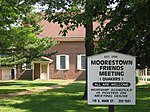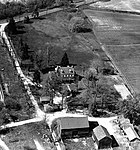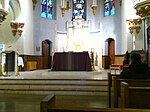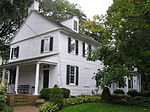Breidenhart
Historic district contributing properties in New JerseyHouses completed in 1894Houses in Burlington County, New JerseyHouses on the National Register of Historic Places in New JerseyIndividually listed contributing properties to historic districts on the National Register in New Jersey ... and 7 more
Moorestown, New JerseyNRHP infobox with nocatNational Register of Historic Places in Burlington County, New JerseyNew Jersey Register of Historic PlacesQueen Anne architecture in New JerseyStone houses in New JerseyUse mdy dates from August 2023

Breidenhart is a historic castle-like house built in 1894 by Samuel Leeds Allen and located at 255 East Main Street in Moorestown, New Jersey. It was added to the National Register of Historic Places on December 22, 1977, for its significance in art, architecture, commerce, and music. It was added as a contributing property to the Moorestown Historic District in 1990. The building is now owned by the Lutheran Social Ministries of New Jersey.
Excerpt from the Wikipedia article Breidenhart (License: CC BY-SA 3.0, Authors, Images).Breidenhart
Zelley Avenue,
Geographical coordinates (GPS) Address External links Nearby Places Show on map
Geographical coordinates (GPS)
| Latitude | Longitude |
|---|---|
| N 39.969166666667 ° | E -74.935555555556 ° |
Address
Cambridge Enhanced Senior Living
Zelley Avenue
08057
New Jersey, United States
Open on Google Maps








